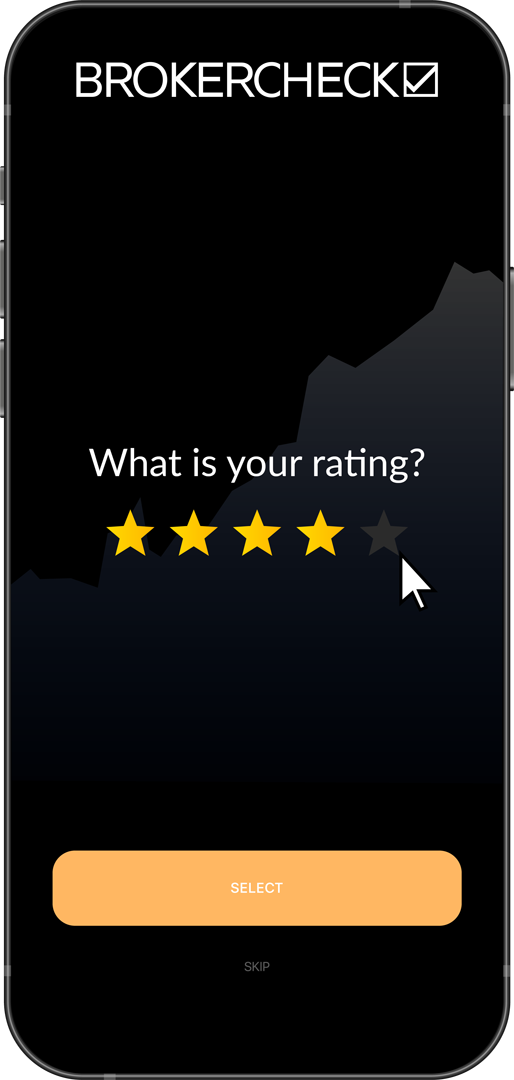1. Understanding Connors RSI
Connors RSI is a powerful tool that traders can leverage to identify short-term trading opportunities. Developed by Larry Connors, this technical analysis indicator combines three key components: the Relative Strength Index (RSI), the Up/Down Length, and the Rate-of-Change.
The Relative Strength Index is a momentum oscillator that measures the speed and change of price movements. It is typically used to identify overbought or oversold conditions in a market. The Up/Down Length is the number of consecutive up or down days. This component provides a measure of the persistency of the market’s direction. The Rate-of-Change is a momentum oscillator that measures the percentage change in price from one period to the next.
In the Connors RSI, these three components are combined into a single value that ranges between 0 and 100. A low Connors RSI value (below 20) typically indicates an oversold condition, suggesting it might be a good time to buy. Conversely, a high Connors RSI value (above 80) signals an overbought condition, suggesting it might be a good time to sell.
The real power of the Connors RSI comes from its multi-dimensional nature. By combining three different aspects of market behavior (price momentum, duration of up/down streaks, and rate of price change), it can provide a more comprehensive view of the market’s condition than any of the components could individually. As such, it can be a valuable tool in a trader’s arsenal for identifying potential trading opportunities.
It’s important to note, however, that like any technical analysis tool, the Connors RSI is not infallible. It should be used in conjunction with other indicators and analysis methods to maximize its effectiveness and minimize potential risks. Always remember that past performance is not necessarily indicative of future results.
1.1. Concept, Formula and Calculation of Connors RSI
Connors RSI, named after its creator Larry Connors, is a comprehensive and versatile indicator designed to give traders a decisive edge in the market. It has gained prominence due to its unique ability to integrate three critical trading concepts: price momentum, duration of the price change, and the magnitude of the price change.
The calculation of Connors RSI involves three components.
It is a composite of three elements:
- RSI: The traditional Relative Strength Index by J. Welles Wilder.
- U/D Length: The number of consecutive up/down days (streak).
- ROC: Rate of Change, which measures the percent change in price from one period to the next.
The formula for each part is as follows:
- Traditional RSI = 100 – [100 / (1 + (Average of x days’ up closes / Average of x days’ down closes))]
- U/D Length = Take today’s close price and compare it with yesterday’s. If it is higher, the U/D Length value is +1, if it is lower, the value is -1. If it is the same, the value is 0. Then, use the RSI calculation on these values.
- ROC = [(Today’s close – Close x days ago) / (Close x days ago)] * 100
The Connors RSI value is calculated by averaging the values of these three components. The formula for Connors RSI is:
Connors RSI = (RSI + U/D Length + ROC) / 3
In the standard Connors RSI system, a 3 period RSI, a 2 period U/D Length and a 100 period ROC are used. The period values can be modified based on the individual trader’s preference.
To calculate Connors RSI, you would first calculate these three components individually. The RSI and the streak are normalized using the RSI formula to bound their values between 0 and 100. The third component, the rank, is a percentile rank based on the past 100 days. The final Connors RSI value is then calculated by averaging the values of these three components.
Connors RSI offers a more holistic view of the market, enabling traders to make more informed decisions. It is not just a tool for identifying overbought or oversold conditions, but also a powerful instrument for identifying short-term price inflections. By incorporating the duration and magnitude of price changes, it provides a broader perspective of market dynamics, making it a valuable tool in a trader’s arsenal.
1.2. Interpretation of Connors RSI Values
Understanding the interpretation of Connors RSI values is a crucial step towards mastering this powerful trading tool. In essence, Connors RSI values range from 0 to 100, where a value above 70 indicates an overbought condition and a value below 30 signifies an oversold condition.
However, this is not a simple binary interpretation. Rather, it’s a dynamic spectrum that requires a nuanced approach. For instance, a value of 80 doesn’t necessarily mean a trader should immediately sell; it could also imply strong upward momentum. Similarly, a value of 20 might not be a signal to buy instantly, but could indicate a strong downward trend.
Interpreting Connors RSI values also involves understanding the market context and the specific asset being traded. For instance, in a bullish market, an RSI value of 70 might not be a reliable sell signal as the asset could continue to rise. Conversely, in a bearish market, an RSI value of 30 might not indicate a buying opportunity as the asset could continue to fall.
Moreover, Connors RSI values should not be used in isolation. They should be combined with other technical indicators and fundamental analysis to make informed trading decisions. For example, a trader might use Connors RSI values in conjunction with moving averages, volume data, and earnings reports to get a more comprehensive view of the market.
Interpreting Connors RSI values is not a one-size-fits-all approach. Each trader might have their unique interpretation based on their trading style, risk tolerance, and market experience. Therefore, it’s important for traders to practice and backtest their strategies using historical data to find what works best for them.
Furthermore, it’s essential to remember that Connors RSI, like any other technical indicator, is not infallible. There will be times when it gives false signals, and traders should be prepared for these situations. It’s always important to have a risk management strategy in place and not to rely solely on Connors RSI for trading decisions.
In the realm of trading, Connors RSI values interpretation is more of an art than a science. It requires patience, practice, and a deep understanding of market dynamics. But with time and experience, it can become a powerful tool in a trader’s arsenal, helping them identify potential trading opportunities and make informed decisions.
1.3. Differences Between Connors RSI and Traditional RSI
While both Connors RSI and Traditional RSI are valuable tools for traders, they offer unique perspectives and uses. The Traditional RSI, developed by J. Welles Wilder, is a momentum oscillator that measures the speed and change of price movements. It is typically used to identify overbought or oversold conditions in a market. On the other hand, the Connors RSI, developed by Larry Connors, is a composite indicator made up of three components: the Traditional RSI, the duration of up/down price change, and the magnitude of the price change.
The key difference between the two lies in their calculation and interpretation. Traditional RSI is calculated using a simple mathematical formula that compares the magnitude of a security’s recent gains to its recent losses. Connors RSI, however, is a more complex calculation that incorporates aspects of price momentum, duration, and magnitude.
This difference in calculation leads to a difference in interpretation. While Traditional RSI values of 70 or above indicate a security is becoming overbought, and values of 30 or below suggest it is becoming oversold, Connors RSI uses a scale of 0 to 100, with values above 80 suggesting a security is overbought and values below 20 indicating it is oversold.
Another significant difference is the application of the two RSIs. Traditional RSI is often used in trending markets, while Connors RSI is particularly effective in sideways or choppy markets. This is because the Connors RSI takes into account the duration and magnitude of price changes, which can provide valuable insights into the market’s direction and volatility.
In summary, while both RSIs can be useful tools for traders, their differences in calculation, interpretation, and application make them suitable for different trading conditions and strategies. Understanding these differences can help traders choose the right tool for their trading needs.
2. Applying Connors RSI in Trading
Connors RSI, a powerful tool in the hands of savvy traders, is an innovative indicator that combines three key components: price momentum, duration of the trend, and market volatility. The amalgamation of these elements offers a comprehensive picture of the market’s behavior, providing traders with actionable insights to make informed decisions.
Firstly, the 14-period RSI is a vital component of the Connors RSI. It measures price momentum, capturing both the speed and change of price movements. This allows traders to identify potential overbought or oversold conditions, signaling potential reversals in the market.
Secondly, the up/down length is an essential part of Connors RSI. This aspect measures the duration of the up/down trend, providing an indication of the market’s momentum. If the market has been trending up for a long time, the up/down length will be high, indicating a potential overbought situation. Conversely, if the market has been trending down, the up/down length will be low, suggesting a potential oversold condition.
Finally, the Rank Indicator is the third component of Connors RSI. This indicator measures the market’s volatility by comparing the current price with the price range over a specific period. High values indicate high volatility, while low values suggest low volatility.
By integrating these three components, the Connors RSI offers a more robust and comprehensive view of the market, enabling traders to identify potential trading opportunities with greater accuracy. By understanding and applying the Connors RSI, traders can navigate the financial markets more effectively, making more informed decisions and potentially increasing their trading success.
2.1. Connors RSI Trading Strategies
Connors RSI Trading Strategies can be a game-changer for traders looking to optimize their trading performance. This innovative approach combines three key components: the traditional Relative Strength Index (RSI), the UpDown Length, and Rate-of-Change. The blending of these three elements creates a more comprehensive and accurate indicator of market behavior, providing traders with an edge in their trading decisions.
The first component, the RSI, is a staple in any trader’s toolkit, gauging the speed and change of price movements. The second component, UpDown Length, measures the duration of the last up/down streak in price. This offers a novel perspective on the market’s momentum. Finally, the Rate-of-Change component quantifies the velocity of price changes, further enhancing the accuracy of the Connors RSI.
One of the most compelling strategies to employ when using Connors RSI is the oversold/overbought strategy. When the Connors RSI value drops below 20, the asset is considered oversold, and traders might consider this a buy signal. Conversely, when the Connors RSI value rises above 80, the asset is viewed as overbought, potentially signaling a sell opportunity.
Another effective strategy is the divergence strategy. If the price of an asset is making higher highs while the Connors RSI is making lower highs, this could indicate a bearish divergence, a potential sell signal. On the other hand, if the price is making lower lows while the Connors RSI is making higher lows, this could suggest a bullish divergence and a potential buying opportunity.
It’s important to remember that while the Connors RSI Trading Strategies can provide valuable insights, they are not infallible. Like all trading strategies, they should be used in conjunction with other indicators and risk management techniques for the best results.
2.2. Risk Management with Connors RSI
Risk management is an essential component of successful trading, and the Connors RSI is a powerful tool to help traders manage those risks. This indicator, developed by Larry Connors, is a composite measure that combines price, duration and volatility to give a comprehensive view of market conditions.
Connors RSI is especially useful in identifying potential reversals in market trends. When the Connors RSI reaches extreme levels, it may indicate that the current trend is overextended and due for a correction. This can provide an opportunity for traders to either exit a position before a potential downturn, or enter a position in anticipation of a trend reversal.
However, like any technical indicator, the Connors RSI is not infallible. It is important to use it in conjunction with other indicators and tools, and to always consider the broader market context. For example, in a strong bull market, even a high Connors RSI reading may not necessarily indicate an imminent reversal.
Proper risk management also involves setting appropriate stop loss and take profit levels. The Connors RSI can help in this regard by providing an objective measure of market volatility. A higher Connors RSI reading indicates greater volatility, which may necessitate wider stop loss and take profit levels to avoid being stopped out prematurely.
Finally, remember that the Connors RSI, like any technical indicator, should be used as part of a comprehensive trading strategy that includes solid risk management principles. By doing so, traders can leverage the power of the Connors RSI to make more informed trading decisions and better manage their risks.
2.3. Combining Connors RSI with Other Technical Indicators
Connors RSI, a powerful tool in a trader’s arsenal, can be even more effective when used in conjunction with other technical indicators. This approach offers a comprehensive view of market trends and potential reversals, increasing the chances of successful trades.
Consider the moving average convergence divergence (MACD), for instance. This indicator is known for its ability to identify potential buy and sell signals. When the MACD line crosses above the signal line, it’s generally seen as a bullish sign, and vice versa. Now, imagine coupling this with the Connors RSI. You could use the RSI to confirm the MACD’s signals, adding an extra layer of security to your trades. If both the MACD and Connors RSI suggest a bullish trend, the chance of a successful trade increases significantly.
Another popular technical indicator to pair with the Connors RSI is the stochastic oscillator. This indicator compares a particular closing price of a security to a range of its prices over a certain period of time. The theory behind this is that in a market trending upwards, prices will close near the high, and in a market trending downwards, prices close near the low. Combining this with the Connors RSI could help traders identify overbought and oversold conditions more accurately.
In essence, combining Connors RSI with other technical indicators can give traders a more holistic view of the market. It’s like having a team of experts in your corner, each providing a different perspective but all working together to help you make the best possible trading decisions. Remember, though, that no strategy is foolproof. Always use these tools as part of a balanced, well-researched trading strategy.










